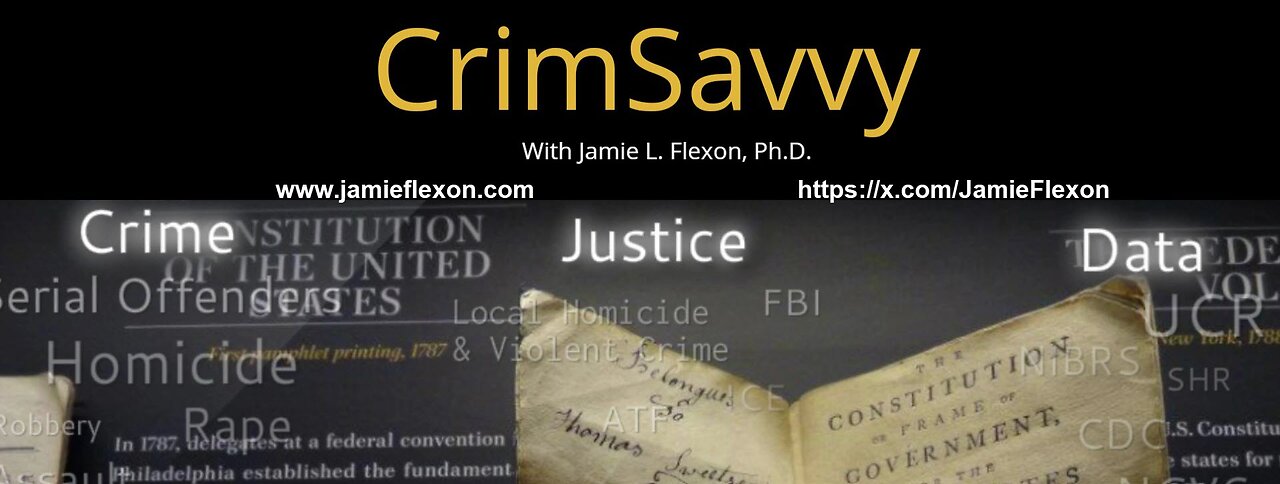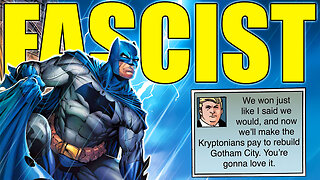Premium Only Content

CrimSavvy: Birds of a Feather: Why Delinquent Friends Matter in Crime
Who you hang out with matters — a lot. In this video, we explore how peer influence shapes delinquency, why criminologists must control for delinquent peers in their models, and what major theories say about the mechanisms behind “birds of a feather” behavior.
Foundational Theories of Peer Influence
Differential Association Theory
Sutherland, E. H. (1947). Principles of criminology (4th ed.). J. B. Lippincott.
Sutherland, E. H., Cressey, D. R., & Luckenbill, D. F. (1992). Principles of criminology. Altamira Press.
• Explains how criminal behavior is learned through interaction with others.
Social Learning Theory
Akers, R. L. (1998). Social learning and social structure: A general theory of crime and deviance. Northeastern University Press.
Akers, R. (2017). Social learning and social structure: A general theory of crime and deviance. Routledge.
• Expands on Sutherland’s ideas by incorporating reinforcement, modeling, and definitions.
Social Bond (Control) Theory
Hirschi, T. (1969). Causes of delinquency. University of California Press.
• Argues that strong social bonds reduce the likelihood of deviance.
Group Contagion / Network Models
Haynie, D. L. (2001). Delinquent peers revisited: Does network structure matter? American Journal of Sociology, 106(4), 1013–1057. https://doi.org/10.1086/320298
• Demonstrates how peer network structures influence delinquent behavior.
Labeling and Identity Theories
Matsueda, R. L. (1992). Reflected appraisals, parental labeling, and delinquency: Specifying a symbolic interactionist theory. American Journal of Sociology, 97(6), 1577–1611. https://doi.org/10.1086/229940
• Shows how peer and parental labeling shape identity and behavior.
Empirical Findings on Peer Influence (& Model Misspecification)
Importance of Controlling for Delinquent Peers
Gottfredson, M. R., & Hirschi, T. (1990). A general theory of crime. Stanford University Press.
• Notes how failure to control for peer effects risks confounding causal explanations of delinquency.
Warr, M. (2002). Companions in crime: The social aspects of criminal conduct. Cambridge University Press.
• Provides detailed empirical evidence on how peers influence offending, including selection vs. socialization.
Thornberry, T. P., Lizotte, A. J., Krohn, M. D., Farnworth, M., & Jang, S. J. (1994). Delinquent peers, beliefs, and delinquent behavior: A longitudinal test of interactional theory. Criminology, 32(1), 47–83. https://doi.org/10.1111/j.1745-9125.1994.tb01146.x
• Shows the reciprocal relationship between delinquent peers and behavior over time.
-
 1:33:32
1:33:32
Flyover Conservatives
1 day ago3 Winning Mindsets for Building Life-Changing Habits - Clay Clark; Why Employers Are Ditching DEI - Andrew Crapuchettes | FOC Show
32.6K -
 4:04:15
4:04:15
SynthTrax & DJ Cheezus Livestreams
1 day agoFriday Night Synthwave 80s 90s Electronica and more DJ MIX Livestream POST DISCO / FUNK / R & B Edition
27.5K -
 51:18
51:18
Degenerate Jay
14 hours ago $1.09 earnedJournalist Claims Batman Is A Fascist Like Donald Trump
24.2K7 -
 1:18:27
1:18:27
Glenn Greenwald
10 hours agoGlenn Takes Your Questions on Major Saudi Arabia Celeb Controversies, Zohran Mamdani and the NYC Debate, Anti-ICE Protests, and More | SYSTEM UPDATE #533
121K34 -
 1:13:26
1:13:26
Tundra Tactical
10 hours ago $3.95 earned🛑{LIVE NOW} Gun Nerd Plays Battlefield 6 Great Tundra Nation Get Together Day 4
25K1 -
 LIVE
LIVE
GritsGG
10 hours agoRanked Top 70! Most Wins in WORLD! 3734+!
100 watching -
 14:41:39
14:41:39
LFA TV
1 day agoLIVE & BREAKING NEWS! | FRIDAY 10/17/25
212K49 -
 2:18:18
2:18:18
Joker Effect
4 hours agoRUMBLE COMMUNITY STREAMING NEWS - CA BANS STAKE - ARC RAIDERS - KICK LOYALS TURNING! - NEW X ALGO
10K -
 1:04:41
1:04:41
BonginoReport
9 hours agoMichelle Obama Admits Affirmative Action Is A Scam - Nightly Scroll w/ Hayley Caronia (Ep.158)
107K65 -
 1:11:40
1:11:40
Kim Iversen
9 hours agoZelensky BLINDSIDED By Trump In White House Meeting | UK Bans RACIST JEWS From Attending Soccer Match
105K214